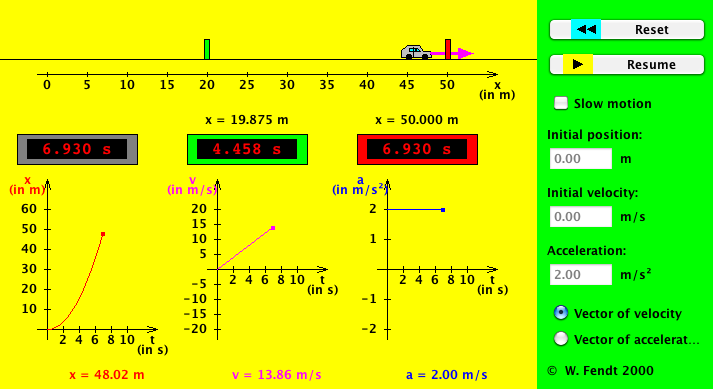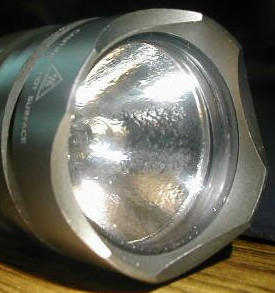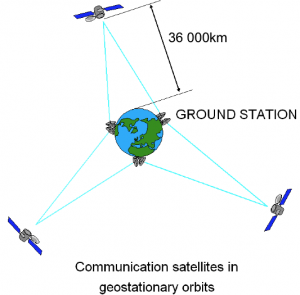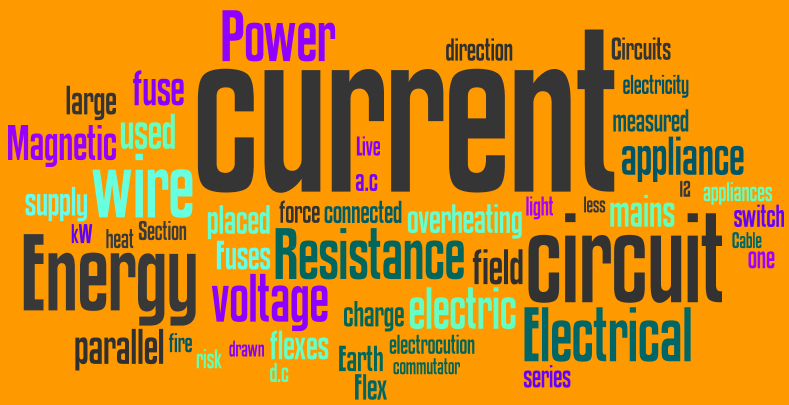There are 3 units in the National 5 Physics course;
Use these links to download the SQA National 5 relationship sheet and data sheet.
This table contains links to past papers from the SQA National 5 Physics exam. These papers and solutions are reproduced to support SQA qualifications on a non-commercial basis according to SQA conditions of use.
2023 multiple choice
Section 2
solutions
2022 question paper solutions
2021 question paper solutions
2019 question paper solutions
2018 question paper solutions
SQA Specimen Paper (includes answers) specimen question paper
2017 question paper solutions
2016 question paper solutions
2015 question paper solutions
2014 question paper solutions
SQA Specimen Paper (including answers) specimen paper
The sections below contain links to revision notes, PowerPoint slides and extra questions to test your readiness for assessments in each of the units. If you need help to view a PowerPoint file, click here to look for the PowerPoint viewer on Microsoft’s site. Or, if you have a Glow username and password, download a copy of Microsoft Office from the tile on your home page. Alternatively, why not download the free LibreOffice office suite? It opens PowerPoint, Excel & Word files. You can also create your own files and save them so that you can open them in school with Microsoft Office.
Some of the pdf files have been created by converting PowerPoint files. In places where the original slide is animated, you will need to read several pages in a row to see the full slide contents.
Check this blog post to find out how you can get free physics revision software for home use only.
Dynamics & Space
whole unit notes – thanks to Mr Noble for sharing his notes!
You know the difference between speed & velocity, don’t you?
Here is a video guide to drawing a vector scale diagram to find displacement.
Vector Scale Diagrams from mr mackenzie on Vimeo.
notes on vectors (pdf)
Try these relative velocity problems.
Graphs of motion
Click on the picture below to try this simulation. Set the variables and click start. Watch as the graphs of displacement, velocity and acceleration are drawn.
You will need java to run the simulation.
speed time graphs revision slides
acceleration revision slides
forces
Newton’s 1st Law
animation showing effects of air resistance
Friction: here are 3 clips about friction from the BBC programme Bang goes the Theory
and look what happens when cold weather removes the friction that helps you to control your car!
Here are some videos on balanced and unbalanced forces affecting the motion of objects. The first clip examines the forces on a cyclist as she cycles round a velodrome.
The second clip looks at the way skydivers use forces to land safely.
Newton’s 2nd law
Newton’s 3rd law
I’ve written a blog post on Newton’s third law during a rocket launch that shows Newton’s 3rd law very clearly. There’s also a follow-up post on Newton’s third law with footage of the Apollo 11 rockets destroying the launch pad.
If you’ve read all that stuff on forces, take a break to watch the Glesga Physics Newton’s Laws video
httpv://www.youtube.com/watch?v=OCnLcq3LBEg
Here is a short video about projectile motion.
orbits and gravity (animation showing planets in our solar system with some gravity information)
Curved reflectors are often used to produce a strong beam of energy in one direction. The shiny backgrounds behind the bulb of a car headlamp, torch or halogen spotlight are examples of curved reflectors.
Projectiles and Satellites
We use curved reflectors to communicate with satellites in orbit around the Earth. Signals are sent from a large curved reflector on the surface to a curved receiver on the satellite. The satellite can relay the signal to another ground station or pass it to another satellite before it is sent back to another ground station.
A geostationary satellite is not actually stationary. By rotating at the same rate as the Earth, the satellite always appears to sit in the same point in our sky. This is quite handy, since it would be a nuisance if we had to move dish aerials to follow the location of a satellite broadcasting our TV signals.
The video below is designed to show you what the view from a geostationary satellite might look like. Since the satellite and Earth rotate at the same rate, one full rotation every 24 hours, the satellite is always over the same point on the Earth’s surface.
httpv://www.youtube.com/watch?v=JSMzD5kYNU0
There’s more about satellites here.
Here is a Sixty Symbols video about orbits and Yuri Gagarin – the first man in space.
Have you ever thought about explaining science topics using only the most popular 1000 words? Here’s an attempt to describe going into space…
You are expected to know that the friction encountered by a spacecraft as it re-enters the atmosphere has the effect of transforming the vehicle’s kinetic energy into heat energy. The vehicle slows down as its kinetic energy is lost.
This article includes a photo taken from the International Space Station that shows just how high the temperature of the space shuttle’s orbiter module can get. This high temperature during re-entry is the reason those special black tiles are needed on its underside.
This short video shows a night-time re-entry over Mexico, with the orbiter on its way to land at the Kennedy Space Centre. There are no engines running, all that heat is being produced by re-entry to the atmosphere.
httpv://www.youtube.com/watch?v=O-FzYdYT724
I wrote a blog post about re-entry into the Earth’s atmosphere.
colour temperature line spectra summary of the information we can get from the light received from any star (surface temperature of the star, what the start is made of, etc.)
How do you prepare for going into space?
Interview with Tim Peake before he goes to the International Space Station from mr mackenzie on Vimeo.
The following three video clips look at the risks involved in a manned mission to Mars.
mission to Mars – part1 from mr mackenzie on Vimeo.
mission to Mars – part2 from mr mackenzie on Vimeo.
mission to Mars – part3 from mr mackenzie on Vimeo.
Don’t forget the danger of being hit by a piece of space junk!
space junk from mr mackenzie on Vimeo.
Test yourself
Now you’ve finished the dynamics & space unit, try some past paper questions from old credit & intermediate 2 exam papers.
Electricity and Energy
Electricity
Here is a diagram of the most important language for the electricity topics in this unit. You can view a larger version by clicking on the image below.
This unit contains more equations but remember that the relationship sheet you are given during the exam will have these, so don’t panic if you forget one of them.
Whole unit notes – thanks to Mr Noble for sharing these!
Charge and Current
This article gives an introduction to ac electricity.
electrical appliances – power rating and safety features
Watch this BBC Bitesize video about the ways that fuses and RCDs help protect us from electrocution.
Current, Voltage and Resistance in series and parallel circuits.
Here is a short video about resistors.
MAKE presents: The Resistor from Make: on Vimeo.
Ohm’s Law
resistance and graphs of current-voltage
current and voltage
Resistance and Ohm’s Law
Here is another video clip about Ohm’s Law.
Ohm’s Law from Make: on Vimeo.
Notice how the presenter converts the current from mA to A before doing the calculation in his example.
There are useful set of series and parallel resistor activities here. Use the next button or follow links in the left sidebar to progress through the topic.
Electrical Power
Electronics
Electronics summary notes – thanks Mr Smith!
Summary notes on electronics from High School of Glasgow.
Here are some notes on LEDs.
Using transistors as switches
MAKE presents: The LED from Make: on Vimeo.
Energy
potential energy examples
kinetic energy examples
conservation of energy in a roadrunner cartoon (youtube clip)
conservation of energy
gas laws
Pressure-Volume
Volume-Temperature
The professor from the brilliant periodic videos site has a clip about Lord Kelvin and the temperature scale named after him.
Kinetic Theory
Can you use the kinetic theory of gases to describe the pressure-temperature, pressure-volume or volume-temperature relationships? If you are having difficulties with this, try reading this blog post.
Then watch the video below about a party trick involving hot air and an egg.
Now go back and listen to Molly’s explain the behaviour of the oxygen molecules once more. Did you notice the “cause and effect” style of explaining what happens? This is the type of answer you need to give in a question where you are asked to describe gas behaviour using the kinetic theory. Also notice that the egg is never “sucked” – suck is bad physics! (Bonus points if you spotted Molly describing air as oxygen, when it is mostly composed of nitrogen)
Specific Heat Capacity
Test yourself
Now you’ve finished the electricity & energy unit, try some past paper questions from old credit & intermediate 2 exam papers.
Waves & Radiation
Whole unit notes – thanks to Mr Noble for sharing these.
Wave Characteristics
Here are some revision notes for the topics relating to waves.
Electromagnetic Spectrum
Learn more about x-rays and ultraviolet from these blog posts.
Refraction of light
total internal reflection from mr mackenzie on Vimeo.
radioactivity – powerpoint file summarising the radioactivity unit
Nuclear Radiation
radiation quiz – how much do you know about radioactivity? (answers at end)
We can measure the Activity of a radioactive source using a Geiger-Müller tube. Watch this video to see how they work.
How to do half-life calculations (pdf)
Radiation doses are mentioned in this article in The Guardian newspaper. You can learn about absorbed dose, equivalent dose and equivalent dose rate here and in more detail on Bitesize.
This blog post gives you some more information about nuclear fission.
Test yourself
Now you’ve finished the waves & radiation unit, try some past paper questions from old credit & intermediate 2 exam papers.
AnswersElectrical Powe






Hi, I’m revising for Nat 5 physics and the two pupil booklets have been of great use to me! Thanks a lot for providing this excellent resource 🙂
I was wondering if you have the answers to the problems in the E&E and D&S booklets, if so could you possibly send me them?
Many thanks
Amandeep
Is this for the past paper booklets? There are links to the answers next to the links to the questions.
Hello
I was meaning the whole unit note booklets :
http://mrmackenzie.co.uk/wp-content/uploads/2015/10/N5-DS-Pupil-Booklet-v2.pdf
http://mrmackenzie.co.uk/wp-content/uploads/2016/03/N5-EE-Pupil-Booklet-v1.1.pdf
Thanks again!
No, sorry. I got them from Mr Noble. You could try googling, he might have a set of answers online. Or maybe someone else has produced a set?
Okay thanks anyway!
Your site is very useful and impressive!
Will there be any study notes for Waves and Radiation soon?
They are there now. Sorry for taking so long.
just to let you know: your website is a god send. I might actually have a chance for an A in Physics!